Experts agree—there is no safe level of lead exposure, even for adults. But there is a safe way to cover lead: lead paint sealer, a.k.a. lead encapsulating paint. We have another article to find out if you have lead: read how to test for lead paint.
Obviously, first, make sure you really have lead. Here’s all you need to know and do in a short post on lead test kits.
Bad lead news from Nov. 2021 news at the bottom of the page.
News from 2022: That old Dutch Boy lead paint? Pay up pal.
Update 2024: The EPA as made a new rule. Thank you.
Can you paint over lead paint?
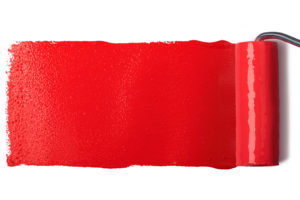
It’s best to totally remove it, but yes, if having it removed is not feasible. You can encapsulate it and seal it by painting over it with a lead paint sealer. It costs a whole heck of a lot less if you cannot afford removal.
Remember that if the surface is rubbed (floors, railings, moving windows, drawers etc) you will also rub off this very tough, very thick, lead encapsulation paint.
Four points:
-
-
-
- How to paint over lead paint in 3 steps.
- The 2 best lead covering products on the market today.
- Lead removal supplies list and info: – Jump to this section.
- Facts on lead removal and covering lead paint – Jump to this part.
-
-
1. How to paint over lead paint in 3 Steps:
- Important: do not sand the old lead paint: other websites tell you to do this…Don’t !! Wearing rubber gloves and a chemical filter respiratory (see below), wipe it with Liquid Sandpaper, then throw away the rags you wiped the paint with. in accordance with local laws.
- Clean the surface like for any other paint: a water-damp rag (then throw away the rag in accord with local laws).
- The best painting method is an airless sprayer or apply like any other paint with a brush and/or roller in for proper thickness (thickness and the number of coats will depend on the chosen products, see below).
Let the first coat dry and apply a second coat if needed. Rarely will you need a 3rd coat with the paints I recommend below.
I’ve written short articles about painting trim and some tips on painting a room.
2. Best Lead-covering Paint:
Apply these like any paint, but do not sand the old lead paint: see above.
INSL-X Lead Block, Lead Encapsulating Paint, by Benjamin Moore. Available online.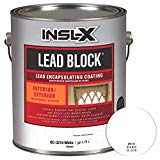
A extra-thick coating that has very strong adhesion: it contains a bitter taste additive to discourage any child from eating any chips that will contain the lead layers beneath it.
- prevents lead from bleeding through
- brush, roller, or spray (see #1 above)
- interior/exterior (any properly prepared wall, wood, masonry, stucco, wood, or metal)
- exterior use not approved in Massachusetts
- so-called ‘low VOC’: but 100 grams/liter is not all that low for me…(wear a chemical filtering respirator)
- use this paint as a primer or topcoat
- white only, eggshell finish only
- clean-up with soap and water
- stir well before use and do not thin
The number of coats:
The recommended final thickness is 14-16 mils when wet.
• apply with a brush and/or roller in 2 coats for proper thickness (thickness, when brushed, is 6-8 mills and 8-12 when rolled).
• The best method is an airless sprayer (spray thickness when wet is 14-16 mils: this is the maker’s preferred method). (See my airless paint sprayer recommendation).
Download the technical data sheet explains every detail.
This is the best lead encapsulating paint out there today.
Runner-up: EcoBond Lead Defender
Tested using EPA’s methods by a 3rd party, The EcoBond Lead Defender was confirmed to be effective in protecting human health.
By volume, it has 37% solids in the solution (compared to Lead Block above which is 44%), this paint might require a 3rd coat. But it does cost 15% less.
The brushed thickness wet is 4-6 mil (compared to the Lead Block above which is 6-8).
- seals and treats lead dust
- contains a bitter-tasting additive that children will never eat
- low VOC
- low odor
- spray, brush, or roll
- use as an interior primer or top-coat…or exterior primer
- stir well before using
- cleans with soap/water
- 888-520-7132 is the helpline
These paints are adhesive coatings. This is more than just a coat of paint, in that the thick coating is bonded to the lead paint. It is important to follow product instructions exactly to be sure that a strong, long-lasting bond is created.
3. DIY Removal and Supplies
Can I remove lead paint myself?
Only if you have government-approved training. This website does not advise that anyone without government-supervised training attempt to remove lead paint. As a professional painter, even I do not do this.
I will only advise you as to where you can get the training: you should only trust the EPA and not handyman websites like this one! This work comes with much danger.
However, I will get you started with a few documents and supplies you will need in any case. I am not providing the ‘how-to’ steps, just supplies and information on how to get trained.
- How to: To learn the method of safe lead paint removal, please read these documents. Jump to these document links.
Shopping list for lead paint removal project: 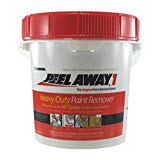
- paint stripper
- plastic sheeting
- respirator face mask and the right filters*
- HEPA filters in your respirator
- vacuum with HEPA filters
- safety goggles
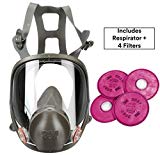
- nitrile gloves
- duct tape
- plastic buckets with lids
* The world of respirator filters and masks is complicated, but I simplified all that in this post.
Things you have already:
- old clothing
- garbage bags
- rags
- window fans (blowing OUT)
Key Safety Tips:
How do you get rid of lead paint? Download this authoritative page shows you all the steps you will take, and it comes from a trusted source. Download and read this excellent document from NY State on the risk and the precautions to take.
When in your home, professional lead removers should:
- Work for 15 minutes, then take a break in another space.
- Never use sanders or heat guns to melt lead-based paint—this creates toxic dust and fumes with lead.
Indoors, workers must make sure the workroom is well ventilated. They should set up a fan so it blows air out a window, and start by applying stripper near the fan and backwards, so fumes are always blowing away from you.
Never forget (in addition to all the information given here), workers should follow these rules from the EPA:
- Remove all furniture, carpets, and drapes and use plastic to seal off the work area
- Never eat or drink in the work area
- Keep people (especially children and pregnant women) out of the paint removal area
- Unless there is lead paint to be removed from the floor, cover the floor

- Wear a respirator with HEPA or “P100” filters (they are the same thing)
- After the job is done, dispose of the work clothing
- Do not wear work clothing outside the work area
- Destroy or wash work clothes separately from all other laundries
- Clean up using vacuum cleaners with HEPA filters
- Wet mop after vacuuming
- Clean well all tools and dispose of all other contaminated materials in accordance with local laws.
4. Basic facts about lead
2.1 million homes with lead paint and a child under six. Not good.
- Do I need to worry about lead paint?
Yes, for any dwelling painted before 1979, and it can be either exterior or interior paint. I recommend to my customers to test any old paint. Lead paint testing doesn’t cost much. If the paint is latex, it is probably safe.
- How do you know if the paint is latex or oil (alkyd)? Put some acetone (most nail polish removers have it). If the paint gets gooey, it’s latex. No: it’s oil. Lead is almost solely found in oil-based paints.
- How do you know if you have lead paint?
There are 2 main ways to test: DIY kits or by sending a sample to a lab (info in this post).
- How can a homeowner get rid of lead paint?
I would say no, but people want to do it anyway! There are many safety concerns you absolutely must know before you do this yourself. See the EPA docs just below.
- Is it dangerous to live with lead paint?
Yes, it is for all of us, but especially for pregnant women and small children. Simply opening and closing a window frame or waking on paint chips can liberate lead dust into the air. Whether we breathe it or swallow it, it causes permanent brain damage.
Lead affects the brain and there is no way to be safe if you have lead paint exposure in your house. Remove it, or encapsulate it with special paint right away.
List of EPA documents on how to remove lead paint.
It’s very pleasing to know the EPA is trustworthy on lead issues.
For any info at any time, call the hotline: National Information Center at 1-800-424-LEAD. They will have the most current list of accredited labs and removal contractors.
- Download this document on how to find a lab for testing.
- Download this document on everything you need regarding renovations.
- The EPA’s search page for lead removal companies in the USA.
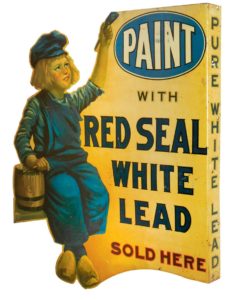
These are just the pages I selected as central to the issue: they have lots of good links to follow.
Is there anything you think we should have mentioned? Do you have a question? Please use the comment form below. Good luck.
News, 2021: The number of young children with lead poisoning may be about to more than double
For an informative look (with some humor) at the dangers of lead in water and paint, watch John Oliver on HBO.
Lead in paint was banned in the US in 1978, the year after I became an apprentice painter! So guess what was I scraping and sanding all those years.
Another excellent resource is from a lab in Wisconsin.
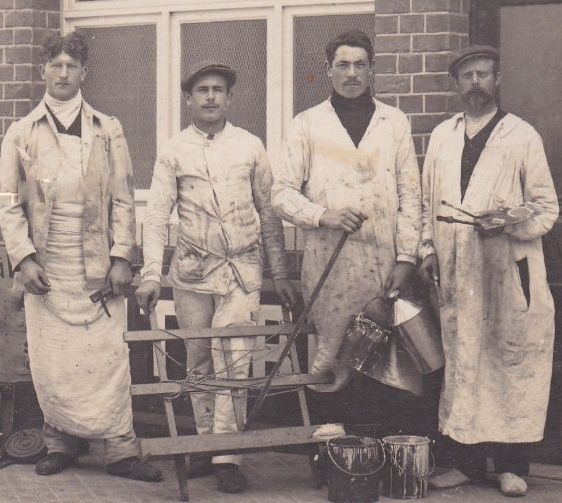
Removed carpet off of stairs, test strip was red. I plan to paint the stairs with the recommended above paint then finish with SW paint for stairs. I’m confused on weather i should use wet sandpaper or not.
If it is lead, you might be making a big mistake. Walkway, stairs, they are going to chip and put lead into the air.Sanding wet or dry? Don’t do this yourself. At least get a professional opinion, and ask how they would do it..what protection they use and then maybe diy.Best to totally remove all that paint in one go and pay the piper. You cannot put a price on health. Know what lead does to the brain, esp of children in the future.
Hi, are there any clear lead encapsulating paints? To seal antique furniture that has tested positive for lead paint? Thank you so much!
Ellie
Hi. Not that I know of. It may be that some clear coating will do the job, but that would not be strictly legal. Probably best to strip it all off and re-apply, altho that sounds like more than you want to do. Good luck.
Hello Brad,
I moved into a peeling lead painted 1890 Victorian home a year + ago. I had planed to use the encapsulation method but have been overexposed to lead dust. I plan to move and sell as is. I do not have any money to play with and I am putting my health over money left on the table. I think this is wise. Do you think it is O.K. staying here until this place sells while taking all precautions is wise, or should I move into a hotel while I search for a new home?
Thank you,
E
No, don’t stay there. Get a professional painting team skilled in lead paint removal/encapsualtion. The new owners will want to know it was done right…worth the money, but get real pros, not kids
Hello
I have a old bathroom door / doorframe that is painted with lead which due to showerdamp over many years has very tiny fine peeling flakes. The tiny flakes collect on the floor from the friction when opening/closing the door.
Is there a way to avoid any sanding/scraping (i would very much like to avoid this, if at all possible) if one doesnt care for aesthetics. I stumbled upon Zinsser Peel Stop, could i paint it with that and then some new White paint on top? or is this not possible in areas of friction? Thank you for this article, help would be highly appreciated!
Well, for every coat you add, that’s thickness. The primer you mentioned is very thin when it dries, but still… I would do this if I did not want to call a pro… Not advising you do this, but it would work for me. Pop the door off the hinge, take OUTSIDE the house and lay on a large dropcloth to catch all the lead paint and use a circular saw, perhaps with a clamped guide and shave off about 1/16 inch off the door. Then, prime the bare wood and paint the door with lead encapsulating paint. Makes sense to me…but I cannot see your situation of course. GOod luck!
Brad — any chance you have heard of Sentinel Lead Encapsulant, and know if it is effective? I ask because it is also zero VOC. Thanks!
I have not heard of it. Look into the maker. If it’s made in Asia, avoid, but in the west, I’d bet on it.
Good luck
b
Thanks so much Brad! Did some research and called the company — located in Dearborn Michigan for over 60 years. Going to go for it! Great to find an encapsulant that is EPA approved, etc and is also zero VOC and less toxic for a house with a 7 month old.
my rails tested positive for lead, the paint looks good just has a few chips here and there nothing serious. The lead inspector said the rail has to be scrape. I see that I can just encapsulate it instead. I’m getting my lead safty renovator supvisor certification in 2weeks. also some doors edge needs scrapping to remove the lead paint. I was quoted almost 20k . trust me there’s no 20k of lead that needs to be removed.
I would do the minimum that it takes to make it a legal situation. Now that they know you have lead, they may insist you remove it. Ask them if you can use the encapsualtion method. Laws are pretty strict on this, like asbestos. If you do have the paint option, get a pro to do it so you have proof. Would not hurt to ask a free consult with a lawyer.
Good luck…let me know what happens?
brad
Hey, Brad, thank you so much for this information in the article and in all the Q&A. I’m in an apartment in Los Angeles, and I am sure that at the very least the kitchen and the living room have lead paint. There is alligatoring occurring in the kitchen window sill/bay and up on the wall near the ceiling and also some just above the baseboards of the living room. Some of the newer paint ON the ceiling has bubbled and I’m afraid to chip it off. I’m dying to repaint the kitchen, the last apartment paint job done by the landlord is terrible, uneven, and off color and dingy now. Some of the alligatoring is chipping, some is not. Is there any process that makes it okay to paint over these areas with encapulant and put on a new coat of paint? Also, areas the landlord previously patched on the ceiling are bubbling and need to come off before a new coat of anything goes on, but I don’t see a safe way to do this, is there one? If I use encapsulant do I need to use anything over it to get the new paint to adhere? The existing paint in the kitchen unfortutely is gloss, so I’m also worried about adhesion. I don’t want to create problems, but the paint is driving me crazy, lead is scary, and if I say something to the landlord, I’m about 85% sure he will just hire his regular guys to do whatever and it won’t involve any proper or licensed lead abatement procedure. I honestly trust myself more. Any advice is appreciated.
Hit the pause button: try not to let it bug you and be reasonable: reason it out.
You must not be exposed to lead or you will have brain damage! So go slow.
Yes the landlord will not care so here is what I would do. First do a lead test to be sure. YOu wrote ‘I am sure’ about lead paint. Why? Do a test. Have a pro come and make the LL pay for it if your test comes up positive. Amazon sells the good test and I link to it on this page above.
Don’t scrape off chips as lead will go into your lungs: just don’t look at the paint!! I don’t think you should consider this to be DIY. Get a pro to give you an estimate which is uslly free.
Also the lead removal pros can tell you about your rights with this rental: a public lawyer will help you force them to remove and re-paint.
Good luck
b
i just bought a house built in 1860 most of windows replaced but all the doors came up positive for lead but rest of house was ok but i have a two year old he’s not eating or picking up chips not sure to just repaint over the doors or remove them completely and repaint the door frames but not sure what to use
Well, to really be safe, get a consultation from a lead removal pro. It’s not just eating paint, but breathing the dust of scraping it.
I’d say either hire a painter to strip and repaint or get a pro to encapsulate properly. The Ben Moore paint is excellent for this.
Best of luck,
Brad
Hi Brad
What would be the best encapsulating paint for 1930s Composition doll so I can repaint over her safely. The doll has tested for lead paint. Thankyou
Hi. I would only guess as I have no experience with anything like this, but you can try the paint on this page above,…. but it’s thick and not meant for details like a doll. Maybe use a paint stripper and take it down to the wood or whatever it is. Test in spots to check that it works first.
Good luck
Thank you for the fantastic information. We have a tiny baby who has unfortunately tested positive to lead exposure. We are trying to make the best decisions for his and our future and are meeting with a professional abatement contractor. I noticed you mentioned VOCs in the context of the encapsulating primer; is the primer a safe product to have throughout the house with young children? Obviously we will move out while the work is being done, but I’m thinking long-term.
Also, it looks like there is supposed to be a link above the comments to ’28 thoughts on “Lead Paint Encapsulation: What You Need to Know About Lead Paint Sealer”’, but it is not active. Can you include the link to this article in a response? Thank you so much, we are grateful for any advice or info.
Well, VOCs are not safe, but they off gas. Lead is forever.
So after a couple of weeks of any paint, you;re safe.
I’ll try to get that link and send soon.
Good luck
So good to know, thank you!! Again, fantastic site and thank you for taking the time to reply.
Thanks for the information, Brad. A question for you — if a house built prior to 1978 has been encapsulated, is it safe to nail or drill into the walls? Would that defeat the purpose of the encapsulation paint and result in dust from the underlying lead paint? Thanks ahead of time!
Yes. If you are careful and isolate every atom, you are ok. But how? It’s a lead professional’s call. Just my opinion. Be very careful.
If I were you, I’d either sell or have a company come in and remove it all then paint with modern paints.
Good luck
What is your opinion on fiberlock child guard for encapsulation? Should I apply the encapsulation primer first, then primer, then paint?
I do not know that product. I always recommend great caution: have an expert take a look. Normally an estimate is free, so why not?
On the primer… just follow the label if you use it. Somehow a primer seems wrong…not sure.
b
as a precaution, I would like to use a clear coating over vintage painted wood puzzles. The puzzles will be for supervised play only, by a child passed the point of putting things in her mouth. Can you recommend a polyurethane or other clear coating to encapsulate the painted surface of older puzzles (made in USA by Conner, and Playskool) in good condition without visible chipping or damage?
I like Minwax. This one is water clean up. A bit pricey, but you want that for something special, and it will last if you seal the lid well. Dries super hard and tough…. key point for clear finishes: DON”T shake. Stir only. Shaking introduces air bubbles and you get lots of unpopped, hard bubbles in your finish.
So stir slowly. Apply thin coats. Spend big money here, don’t go with lesser companies…in all things paint.
B
Hi,
I have latex paint over oil paint. the new latex paint started peeling off, i tried sanding and then steaming and peeling off the latex paint, which came off in bits and peices. Then tested the base layer for lead (which tested positive). It looks like maybe the lead was encapsulated? Now what should i do? Can i use liquid sandpaper over the new acrylic paint, then paint? Or encapsulate over liquid sand paper, then paint?
Be very careful here. Sanding paint that’s over lead paint will put lead into the air, floor, etc. My advice is to call a pro company to remove it. If you don’t have the money, my best advice is to buy lead encap. paint, test that it bonds to all existing type paints and then give it a com0plete encapsulatinon treatment. Liquid sandpaper will create toxic rags but it’s better than putting lead into the air etc. Liquid sandpaper just dulls whatever you apply it to.
Still, pros should do this. Good luck.
Thank you so much!
Hi Brad – I have lead paint on my basement stairs. From what I’ve read, encapsulation isn’t a proper solution because it’s a walked-on surface. But I can’t find anything about what IS safe to do. Do you know the answer, or who could provide it? Thanks!
Definitely, the answer is a professional removal service. If money is an issue, you might get trained in how to do the removal. It’s nasty and dangerous, but you could do it.
Other than that, I have no advice. You are right to not encapsualte. Good luck.
Thanks so much for this info. My house was built in 1926 and I have a small child (we have had her tested for lead twice and it was not found in her blood level thankfully). We have some paint that chips off the baseboards and old doors in our house. I’ve tested these white chips and they didn’t come back positive for lead but the area that they leave exposed on the wall is a yellow paint which does come back positive for lead. It appears there’s several layers of regular paint over the lead paint. Can I just use encapsulation paint over all of these layers?
Yes, but do not sand. Now if you don’t sand you may not get good bonding and that paint may not last long.
Before you do anything, obviously keep your child away, but call a pro to pick their brains to confirm your plan.
Even if the ‘estimate’ is not free, it will be worth it.
You may be best hiring a pro to come in and strip or at least do the necessary painting with proper prep.
I’m not sure if a liquid de-glosser is applicable here,…. could be done instead of sanding then you get great adhesion.
From the Lead Block PDF: Avoid dry sanding lead bearing surfaces whenever
possible.
and
The surface to be coated must be clean, sound, dry and free of dirt,
grease, oil, wax, rust, mildew, flaking paint or any other
contamination that could affect proper adhesion and film
performance. Remove surface dirt, grease and oil by washing the
surface with and oil and grease emulsifier, per label instructions.
Read under surface prep in this PDF.
I have an antique mantel that was last painted in the 1950’s. The paint is badly chipped and falling off. The mantel is on a covered porch but I would like to seal it like it is and bring it inside. Is this a safe thing to do?
In terms of exterior paint, it’s ok. In terms of lead, you must test. The 50s? I’m giving great odds that it is lead. If so, encapsulate or have a professional company strip it down. The 2nd is better, but more $
Good luck!
Thank you. I think I will leave the mantel on my porch. It belonged to my aunt and uncle. My husband and I removed it before the house was demolished.
Hey Brad, thanks for the info here. I’ve been looking into this for a few weeks now. We have a large outdoor concrete patio at the house we moved into that was painted several times over the years. The top layers are peeling pretty badly. I tested a collection of the chips and lead was found. My action plan is use paint stripper (either Smart Strip or Blue Bear) to clean off the failing paint, then encapsulate the surface with lead defender. I’m taking a lot of safety precautions with the work. We contacted some professionals about remediation and it’s out of our ability to pay. So I have to do it myself. It’s been stressful trying to figure out, with small kids and moving isn’t an option.
Pick the brains of the pros. Tell them honestly you cannot afford it, and ask what the procedure is and see how much of the nastiest and dangerous stuff you can afford to pay for and how much they charge for the rest: a al carte.
If you mean the floor by ‘patio’, you are doing the right thing to remove it as it gets wear. Railings and walls, not so much and you can just encapsulate.
But if you and they remove all the lead, no need for that expensive paint which is not made for floors.
Read about concrete prep.
Learn what it takes and perhaps just buy a grinder with lots and lots of discs and have at it. A good respirator …full face, and many outer paper filters changed. Read about my system of changing outer filters. There is a link in there to the full face respirator too.
Stripper? On concrete, it may not be possible to get in the nooks. I’d grind down 1/4 inch of the rock right off and paint as I described in the concrete painting posts. Easy to find on this site.
Good luck
B
Hello,
I have old barn gutters that have bits of old paint that I’m assuming is lead and rust on them. I want to use them to plant lettuce in and hang in garden. Would using the lead blocking paint you recommend make them safe for this purpose? Thanks Tara from Ohio
If you mean the roots will touch the paint, even if you coat with this paint, I’d say it’s a mistake. Moisture, movement… not good for any paint.
I cannot really tell what you are doing from what you wrote, sorry. Maybe line the gutters with the rubber mats used for artificial ponds? not just any old plastic
Good luck,
brad
ps maybe test that paint with the kit above on this page?
Can lead blocking paints be used on painted wooden kitchen cabinets?
I think so but you know fingernails are always chipping paint near the cabinet handle, so it’s better to remove all the old paint.
I know that’s a lot, but it’s best.
To be certain, write to Benjamin Moore and ask. They are great and are the final word.
Good luck,
Brad
Hi
I have an antique stained glass window that I bought at an estate sale. I want to hang it in our house but the wood frame it is in tested positive for lead. I was thinking I could do 2 or 3 coats of the Benjamin Moore Lead Block. Do I need to use the liquid sandpaper first?
Thanks
That depends on whether or not the new paint will adhere. Adhesion is tricky, but in general, if it’s scuffed or weathered, it’s probably fine to just clean and paint. If it’s shiny, you should de-gloss, but don’t sand unless you take precautions. Get the liquid sandpaper on this page (step 1). Or be very careful and sand outside..protect your lungs! A ‘virus’ mask will not be enough. You need a respirator. IT’s just too dangerous.
I think one good coat will do, but 2 or 3, sure, it’s better.
Good luck,
b
Hi
I’m in California and have found that the Insl-x lead block cannot be shipped here due to prop 65.
I guess living with lead is considered better than encapsulating! Other option to deal my lead painted window frame?
I’m not sure what you mean by ‘deal my’ window.
You could hire a company to remove it totally.
That’s the best but expensive.
You could also find a friend in Nevada who visits!
Good luck,
b
I see it has been awhile since Susan posted, but very grateful for her question and Brad’s answer! I too was gifted a 80″ church stained glass window and just completely and carefully cleaned the glass. The whole cleaning process was done “wet” to keep any possible dust from lead from welling up. I tested 3 different paints that had gotten slapped on frame of window, all positive for lead. Our guess is the window is from late 1800’s- 1910. I used a paste I made of water and Barkeepers Friend to remove rust on cross bars.
This solution for encapsulating the lead sounds spot on!
Thank you Brad!
I plan to seal off all the cleaned glass, as that was a ton of work in itself. (Used Sprayway window cleaner without ammonia to polish up glass…perfectly. 100+ years of grime!)
Then, I’ll apply the Liquid sand paper to help with adhesion of the final 2 coats of Benny’s Lead Block.
I have stressed about how to still be able to hang this gorgeous window (on heavy duty cleats my carpenter has made.) and feel safe about it now that I know it had lead on all the paint.
Again, this was a hard find for answers. So THANK YOU for the wise advice!
I’ll save your method for advising others, thanks. Risky business… you did well.
Yes, in fact a very small rag with circles is best, but no not a brush.
Why small rag? Because the more liquid you get in your rag the more will evaporate.
Good rubber (nitrile) gloves are essential as is a respirator with good chemical filters.
Just search this site and you’ll find all that.
And open all the windows. Keep kids out for a day or more.
No, you don’t have to rush to paint: do all the de-glossing then paint.
Good luck!
I wrote to you earlier about steps to use latex paint over oil based paint. Thanks for the info. I have decided to try liquid sandpaper and wondered about the application. The bottle says to apply with a rag in a circular pattern. Could this be applied with a brush and wiped off? I also read on another site that you must prime and paint right after deglossing or you will have to degloss again, this sounds off, but the site indicated the gloss would come back??? I have a lot of trim and doors to degloss and wanted to get all of the deglossing done before priming and painting. Any info is appreciated.